
I miss Shah Rukh Khan (SRK) the actor’. ‘SRK the star’ has overshadowed SRK the actor for quite some time now.
Let me explain.
SRK the actor is the one we saw in Chak de India and Dil se. SRK the star is the one we saw in Kabhi Alvida Na Kehna and Om Shanti Om. I like the former but I have serious issues with the latter. I haven’t seen any SRK film since My Name Is Khan. I chose not to watch Ra One, Don 2, Rab Ne Bana Di Jodi etcetera, as quite clearly they did not belong to SRK the actor.
The day I saw the first promo of Jab Tak Hai Jaan (JTHJ), I became excited on the prospect of seeing the actor again. Add to it the combination of AR Rehman and Gulzar saab in the music department and Yash Chopra at the helm of the affairs and rest assured something special should have been in the making.
Meanwhile, Yash Chopra passed away and it became impossible for me to not watch it.
Unfortunately, I regretted it.
If I takeout SRK’s acting during the second half and the dance off in the first half before the Ishq Shawa song, JTHJ turned out to be a colossal disappointment. Had it been some other team behind the creation of JTHJ, I would have walked out of the film at the half time.
In JTHJ, we have problems.
Problem #1:
The story or the lack of it, or too much of it. Be it the distant inspiration from the classic Eternal Sunshine of the Spotless Mind or almost all the love stories you would have seen in the past, there is no real story in JTHJ; instead there is a strange mix of too many stories here. At least two of them could make full movies on their own. Even if we ignore (which I could not) the fact that Anupam Kher is shown as a 50-year-old man in the film while SRK for a good 50% of the film is 25 and Katrina Kaif 21, there is a lot that went wrong with the script and extremely scattered screenplay did not help either.
Problem #2:
The lack of ingenuity and newness.
Katrina Kaif is a Non Resident Indian (NRI) with accented Hindi for umpteenth time: cue Namaste London, New York, Singh is King, Mere Brother Ki Dulhan.
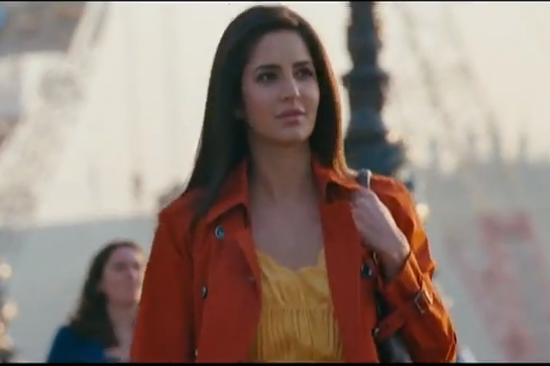 Anushka Sharma is a bubbly, read: annoying, Delhi girl yet again: cue Band Baaja Baraat, Badmaash Company, Ladies vs. Ricky Bahl.
SRK is singing on the streets like a carefree teenager or quivering his lips in emotional scenes which he did a decade back in almost all his early movies.
Then comes the done-and-dusted premise of rich girl falling in love with a poor boy because of his pure heart followed by the most ridiculous reason for a breakup.
Problem #3:
More than a hundred minutes of loopholes in the story and treatment. Going into the details of this problem will require three pages of hard to digest words.
Spoiler alert: giving the title of ‘the man who cannot die’ to a 38-year-old who is technically not of dying age yet, a soldier saving a drowning girl who later announces that she had been a swimming champion, an afro looking Lahori Pakistani guy who is later declared a Pathan and so on totally ruins all your concepts of ethnicity and geography.
A journalist wearing skimpy shorts and moving around freely with army officers in a war torn area where more than a hundred bombs have been found and diffused, a Punjabi Hindu girl going to church for praying every Sunday to ‘Sir Jesus’… yes Sir Jesus etcetera.
If you survived all this wait till you get to the London metro bomb disposal scene.
Enough said.
Problem #4:
Anushka Sharma and Katrina Kaif. Just when you thought Kat had spent enough time in the industry to learn acting, she gives a performance that can make you forget her first few films. Here is Katrina Kaif for you, enjoying a success rate which even Madhuri and Kajol didn’t, delivering the most wooden performance you’d ever see.
On the other hand, there is Anushka Sharma who needs to realise that the Band Baaja Barat is over and the movies she is signing now are different and need versatility.
Anushka Sharma is a bubbly, read: annoying, Delhi girl yet again: cue Band Baaja Baraat, Badmaash Company, Ladies vs. Ricky Bahl.
SRK is singing on the streets like a carefree teenager or quivering his lips in emotional scenes which he did a decade back in almost all his early movies.
Then comes the done-and-dusted premise of rich girl falling in love with a poor boy because of his pure heart followed by the most ridiculous reason for a breakup.
Problem #3:
More than a hundred minutes of loopholes in the story and treatment. Going into the details of this problem will require three pages of hard to digest words.
Spoiler alert: giving the title of ‘the man who cannot die’ to a 38-year-old who is technically not of dying age yet, a soldier saving a drowning girl who later announces that she had been a swimming champion, an afro looking Lahori Pakistani guy who is later declared a Pathan and so on totally ruins all your concepts of ethnicity and geography.
A journalist wearing skimpy shorts and moving around freely with army officers in a war torn area where more than a hundred bombs have been found and diffused, a Punjabi Hindu girl going to church for praying every Sunday to ‘Sir Jesus’… yes Sir Jesus etcetera.
If you survived all this wait till you get to the London metro bomb disposal scene.
Enough said.
Problem #4:
Anushka Sharma and Katrina Kaif. Just when you thought Kat had spent enough time in the industry to learn acting, she gives a performance that can make you forget her first few films. Here is Katrina Kaif for you, enjoying a success rate which even Madhuri and Kajol didn’t, delivering the most wooden performance you’d ever see.
On the other hand, there is Anushka Sharma who needs to realise that the Band Baaja Barat is over and the movies she is signing now are different and need versatility.

 His portrayal of the soldier Samar is much more graceful. He underplays his part, speaks less and speaks convincingly. His brief period where he is suffering from retrograde amnesia is the strongest point of the film, but brief periods do not save a 177 minute long film from being a disaster. If you are a die-hard SRK fan, which is a huge part of Indo-Pak population, you should look forward to these sequences.
His portrayal of the soldier Samar is much more graceful. He underplays his part, speaks less and speaks convincingly. His brief period where he is suffering from retrograde amnesia is the strongest point of the film, but brief periods do not save a 177 minute long film from being a disaster. If you are a die-hard SRK fan, which is a huge part of Indo-Pak population, you should look forward to these sequences.
 Performances of other actors including Sarika, Anupam Kher, Rishi Kapoor and Neetu Singh are not worth mentioning. The actors playing SRK’s army staff are better than the seniors.
Veteran Anil Mehta’s tried and tested cinematography is excellent and is one of the major reasons why I stayed till the end.
While the background music is good, the film’s soundtrack leaves a lot to be desired.
Some would still argue that it’s a romantic movie and that it was made for entertainment, and that one should give creative liberty to certain things. I have only one problem with that argument.
I did not go to watch a south Indian remake or an Akshay Kumar/Salman Khan no brainer.
I went to watch the last work of Yash Chopra; the man who created Deewar, Kabhi Kabhi, Silsila, Mashaal and my personal favourite Lamhe. He was a true genius and he most certainly did not deserve a farewell like this. Even though he did a fairly good job with the script, it was his son’s story that left him with almost nothing. Yash Chopra will be missed but on a personal front, I would prefer forgetting his last film.
Even if JTHJ was a montage of all of Yash Chopra’s previous films, it would still be a blockbuster so the result of the film was predicted anyways.
You may still watch it; if for nothing else then for the eye candy and the tribute montage for stalwart director at the end which was probably the best thing about the 180 minutes spent in the theatre.
PHOTOS: PUBLICITY
Read more by Sami here or follow him on Twitter @SamiSaayer
Performances of other actors including Sarika, Anupam Kher, Rishi Kapoor and Neetu Singh are not worth mentioning. The actors playing SRK’s army staff are better than the seniors.
Veteran Anil Mehta’s tried and tested cinematography is excellent and is one of the major reasons why I stayed till the end.
While the background music is good, the film’s soundtrack leaves a lot to be desired.
Some would still argue that it’s a romantic movie and that it was made for entertainment, and that one should give creative liberty to certain things. I have only one problem with that argument.
I did not go to watch a south Indian remake or an Akshay Kumar/Salman Khan no brainer.
I went to watch the last work of Yash Chopra; the man who created Deewar, Kabhi Kabhi, Silsila, Mashaal and my personal favourite Lamhe. He was a true genius and he most certainly did not deserve a farewell like this. Even though he did a fairly good job with the script, it was his son’s story that left him with almost nothing. Yash Chopra will be missed but on a personal front, I would prefer forgetting his last film.
Even if JTHJ was a montage of all of Yash Chopra’s previous films, it would still be a blockbuster so the result of the film was predicted anyways.
You may still watch it; if for nothing else then for the eye candy and the tribute montage for stalwart director at the end which was probably the best thing about the 180 minutes spent in the theatre.
PHOTOS: PUBLICITY
Read more by Sami here or follow him on Twitter @SamiSaayer

 I am disappointed in myself, because it took me over an hour to realise where I had seen Talaash before.
I hadn’t seen it before, I had read it.
I am disappointed in myself, because it took me over an hour to realise where I had seen Talaash before.
I hadn’t seen it before, I had read it.
 Aamir is playing his age - something a certain other Khan needs to learn from. He is a cop of high repute but there is no over the top praising by his team members like the entry of
Aamir is playing his age - something a certain other Khan needs to learn from. He is a cop of high repute but there is no over the top praising by his team members like the entry of  Instead there is a
Instead there is a  Talaash demands big efforts from the cast and they deliver.
It’s great to see a vintage Rani Mukherjee performance. A perfect reminder of why she was a Film Fare worthy actress not long ago. Even though, far away from a glamorous look, she comes off as strangely hot in her sari clad housewife look. Charming indeed and much needed after a disastrous Aiyya. Her confrontation scene with Aamir on the road is really good and her helplessness in front of her psychiatrist is expressed beautifully.
Nawazuddin Siddiqui is having the best year of his life.
With Kahaani, Gangs of Wasseypur and now Talaash, looks like his struggling days are over. His portrayal of Taimur is nothing short of brilliant. This is one actor I would want to see more and more in every film.
Kareena Kapoor is good, minus the unfitting perfect Hindi accent unlike other prostitutes shown in the film. Even if we ignore that, it still cannot be called a Kareena film as her other performances are far stronger.
Raj Kumar Yadav is also impressive once again. I am now eagerly waiting for his ‘Shahid’. Subrat Dutta is a star too, even though in a much smaller role.
Having said as much, the film
Talaash demands big efforts from the cast and they deliver.
It’s great to see a vintage Rani Mukherjee performance. A perfect reminder of why she was a Film Fare worthy actress not long ago. Even though, far away from a glamorous look, she comes off as strangely hot in her sari clad housewife look. Charming indeed and much needed after a disastrous Aiyya. Her confrontation scene with Aamir on the road is really good and her helplessness in front of her psychiatrist is expressed beautifully.
Nawazuddin Siddiqui is having the best year of his life.
With Kahaani, Gangs of Wasseypur and now Talaash, looks like his struggling days are over. His portrayal of Taimur is nothing short of brilliant. This is one actor I would want to see more and more in every film.
Kareena Kapoor is good, minus the unfitting perfect Hindi accent unlike other prostitutes shown in the film. Even if we ignore that, it still cannot be called a Kareena film as her other performances are far stronger.
Raj Kumar Yadav is also impressive once again. I am now eagerly waiting for his ‘Shahid’. Subrat Dutta is a star too, even though in a much smaller role.
Having said as much, the film  This is his second venture with Excel Entertainment after the era defining Dil Chahta Hai and he has delivered another masterpiece for them. The perfectionist that he is, Khan has given one of his best performances to date.
His self-inflicted pain is obvious on his face. His eyes communicate his tiredness, his face communicates his regret. The best scene of the film, in which he is reliving the tragedy of his life and how he could have changed the whole event, is one of the best ever created on cinema. When he was happy to see his wife enjoying a senseless movie, the audience felt his relief.
When he cried, people on either side of me in the theatre cried; definitely the best performance of the year. Even better than Paan Singh Tomar and Gangs of Wasseypur.
If you plan on watching Talaash, make sure you don’t miss any part of it. Every minute is important. Don’t text, don’t tweet and don’t take toilet breaks.
Talaash is no joke; its
This is his second venture with Excel Entertainment after the era defining Dil Chahta Hai and he has delivered another masterpiece for them. The perfectionist that he is, Khan has given one of his best performances to date.
His self-inflicted pain is obvious on his face. His eyes communicate his tiredness, his face communicates his regret. The best scene of the film, in which he is reliving the tragedy of his life and how he could have changed the whole event, is one of the best ever created on cinema. When he was happy to see his wife enjoying a senseless movie, the audience felt his relief.
When he cried, people on either side of me in the theatre cried; definitely the best performance of the year. Even better than Paan Singh Tomar and Gangs of Wasseypur.
If you plan on watching Talaash, make sure you don’t miss any part of it. Every minute is important. Don’t text, don’t tweet and don’t take toilet breaks.
Talaash is no joke; its 

 PHOTO: CHENNAI EXPRESS movie Facebook page[/caption]
On the journey, he meets a South Indian woman Meenamma (
PHOTO: CHENNAI EXPRESS movie Facebook page[/caption]
On the journey, he meets a South Indian woman Meenamma ( Deepika Padukone as Meenamma. PHOTO: Chennai Express Facebook page[/caption]
The rest is the relentless blending of light comedy, tender romantic moments, drama, heroic action and dance - all in South Indian style.
If truth be told,
Deepika Padukone as Meenamma. PHOTO: Chennai Express Facebook page[/caption]
The rest is the relentless blending of light comedy, tender romantic moments, drama, heroic action and dance - all in South Indian style.
If truth be told,  PHOTO: Chennai Express Facebook page[/caption]
[caption id="" align="alignnone" width="600"]
PHOTO: Chennai Express Facebook page[/caption]
[caption id="" align="alignnone" width="600"] A screenshot from the song Lungi Dance. PHOTO: Chennai Express Fan Club Facebook page[/caption]
Performance wise, both Shahrukh and Deepika did their job impressively; they are inspirational actors of Bollywood and here once again both performers excel in their characters. Throughout the film, Shahrukh’s performance is a zany and pleasing one. Totally immersed in Rahul’s character, he has delivered his best comic performance with beautiful timing – for instance, when he changes his facial expressions all of a sudden into ‘My name is Rahul and I am not a terrorist’.
Similarly, when Meenamma wonders if he is 50-years-old, an insulted Rahul reacts with a genuinely hilarious action. He stands out with his comical acting right till the end of the movie. Deepika Padukone comes up as a complete stunner and driving-force of the film. She provided the accurate momentum with her Tamil accent and colourful saris. Although her accent confuses audiences to some extent, Deepika allured everyone with her performance and compelling chemistry with the co-star.
Having said as much, the film is deprived of a persuasive script and has a superfluous comic sense. What I found most annoying was how the Tamil language has been extensively used in dialogues which non-Tamil speaking audiences couldn't even understand as there were no subtitles. This was boring to watch and frustrating at the same time.
Yet, the movie does manage to offer the film buffs something to laugh about and that’s the core reason that helped the film to smash all previous records to cross $3.9 million marks. For serious moviegoers, though, it has too many loopholes, but it has something for everyone, which is why the mesmerising
A screenshot from the song Lungi Dance. PHOTO: Chennai Express Fan Club Facebook page[/caption]
Performance wise, both Shahrukh and Deepika did their job impressively; they are inspirational actors of Bollywood and here once again both performers excel in their characters. Throughout the film, Shahrukh’s performance is a zany and pleasing one. Totally immersed in Rahul’s character, he has delivered his best comic performance with beautiful timing – for instance, when he changes his facial expressions all of a sudden into ‘My name is Rahul and I am not a terrorist’.
Similarly, when Meenamma wonders if he is 50-years-old, an insulted Rahul reacts with a genuinely hilarious action. He stands out with his comical acting right till the end of the movie. Deepika Padukone comes up as a complete stunner and driving-force of the film. She provided the accurate momentum with her Tamil accent and colourful saris. Although her accent confuses audiences to some extent, Deepika allured everyone with her performance and compelling chemistry with the co-star.
Having said as much, the film is deprived of a persuasive script and has a superfluous comic sense. What I found most annoying was how the Tamil language has been extensively used in dialogues which non-Tamil speaking audiences couldn't even understand as there were no subtitles. This was boring to watch and frustrating at the same time.
Yet, the movie does manage to offer the film buffs something to laugh about and that’s the core reason that helped the film to smash all previous records to cross $3.9 million marks. For serious moviegoers, though, it has too many loopholes, but it has something for everyone, which is why the mesmerising
 Photo: Happy New Year Facebook Official Page[/caption]
Plot wise,
Photo: Happy New Year Facebook Official Page[/caption]
Plot wise,  Photo: Happy New Year Facebook Official Page[/caption]
Also, audiences should know that Happy New Year is not a performance-oriented movie; it is a celebrity-oriented film. Tasteless performances and no good songs to back them up either!
Watch it for Shahrukh’s eight-abs, Sonu’s hunk of a body, Deepika’s alluring beauty (minus her acting skills), Boman’s typical Parsi-ish delivery and Abhishek’s over-acting. But don’t expect it to be a good movie.
Even with all these flaws, the movie did pretty well at the
Photo: Happy New Year Facebook Official Page[/caption]
Also, audiences should know that Happy New Year is not a performance-oriented movie; it is a celebrity-oriented film. Tasteless performances and no good songs to back them up either!
Watch it for Shahrukh’s eight-abs, Sonu’s hunk of a body, Deepika’s alluring beauty (minus her acting skills), Boman’s typical Parsi-ish delivery and Abhishek’s over-acting. But don’t expect it to be a good movie.
Even with all these flaws, the movie did pretty well at the  Photo: Happy New Year Facebook Official Page[/caption]
What this movie proved, unfortunately, was that even a tasteless, senseless and below-average movie like Happy New Year can enter the INR 100-crore club, if it has Shahrukh Khan in it.
I’m not sure it deserved this, but I’ll give it 2/5.
Photo: Happy New Year Facebook Official Page[/caption]
What this movie proved, unfortunately, was that even a tasteless, senseless and below-average movie like Happy New Year can enter the INR 100-crore club, if it has Shahrukh Khan in it.
I’m not sure it deserved this, but I’ll give it 2/5.

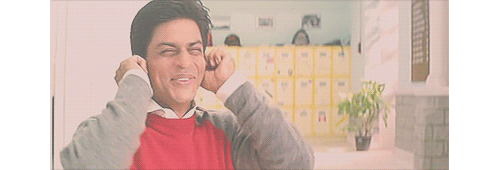 Shah Rukh Khan.
Shah Rukh Khan. Shah Rukh Khan.
Shah Rukh Khan. Shah Rukh Khan.
Shah Rukh Khan. Shah Rukh Khan.
Shah Rukh Khan.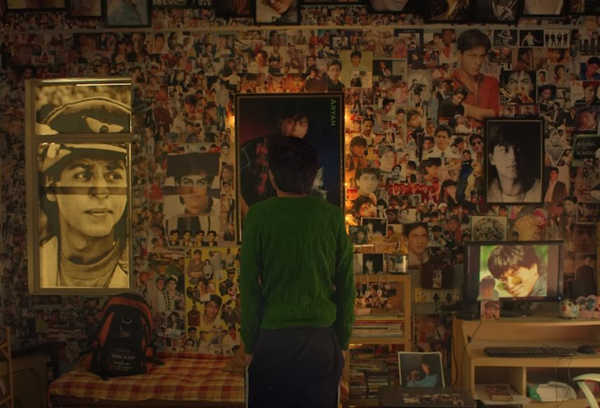 Shah Rukh Khan.
Shah Rukh Khan.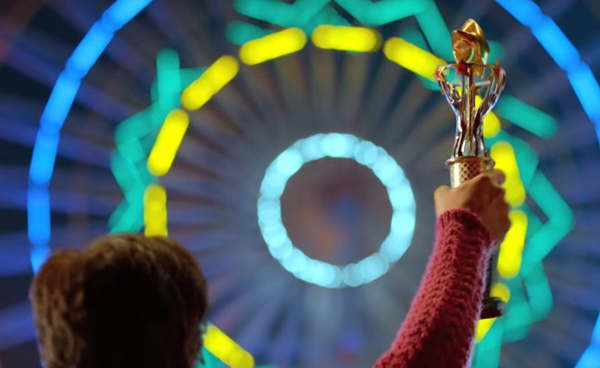 Shah Rukh Khan.
Shah Rukh Khan.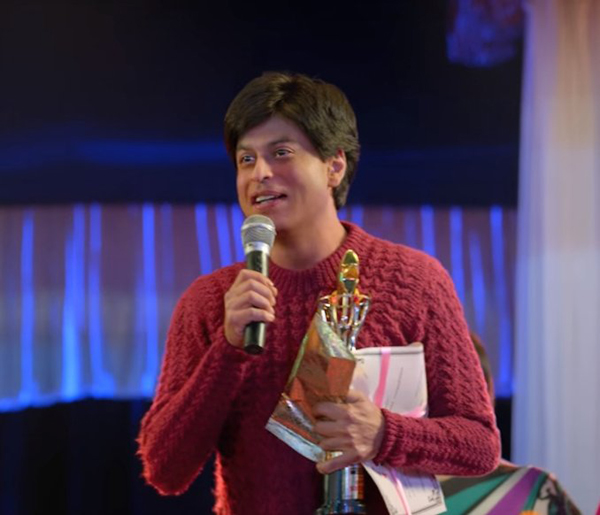 Shah Rukh Khan.
Shah Rukh Khan.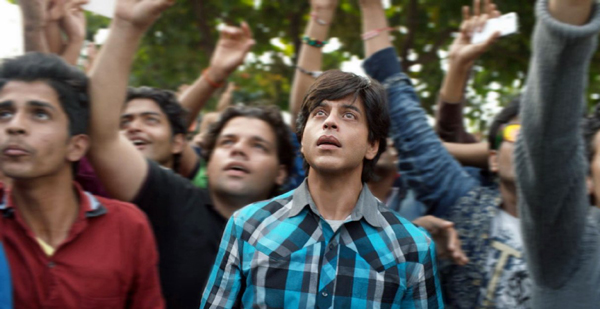 Shah Rukh Khan.
Shah Rukh Khan.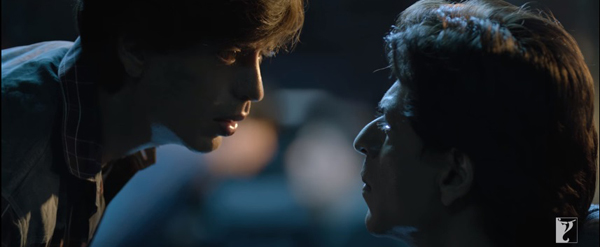 Shah Rukh Khan.
Shah Rukh Khan.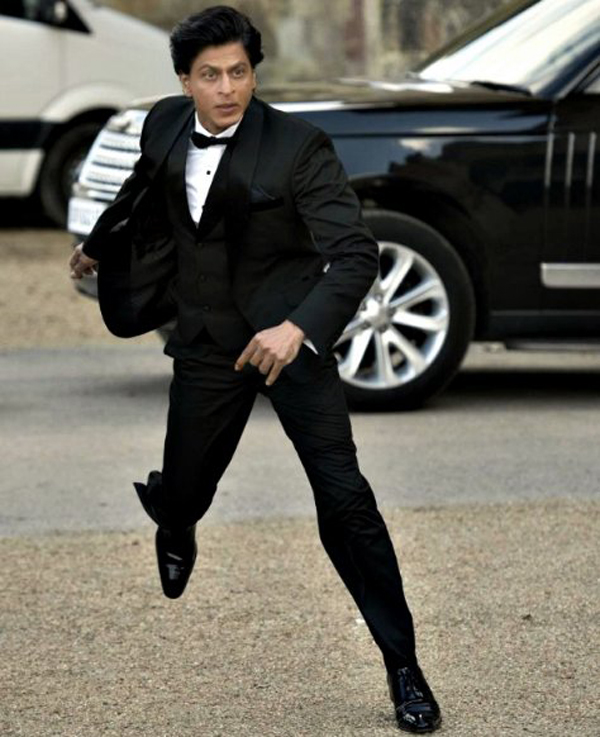 Shah Rukh Khan.
Shah Rukh Khan.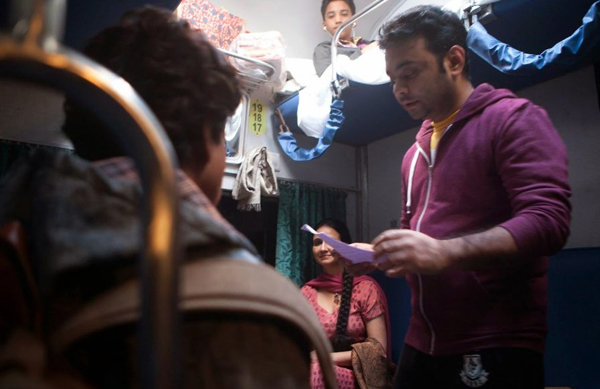 Maneesh Sharma.
Maneesh Sharma.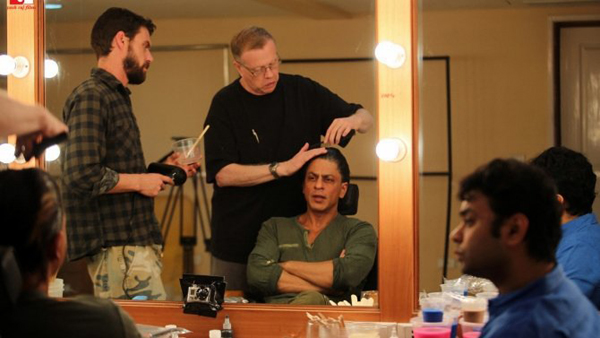 Greg Cannom and Shah Rukh Khan.
Greg Cannom and Shah Rukh Khan. Shah Rukh Khan.
Shah Rukh Khan. Shah Rukh Khan.
Shah Rukh Khan. [poll id="524"]
[poll id="524"]

 Ranbir Kapoor, Anushaka Sharma and our very own Fawad Khan.
Ranbir Kapoor, Anushaka Sharma and our very own Fawad Khan. Karan Johar and Fawad Khan
Karan Johar and Fawad Khan Anushaka Sharma
Anushaka Sharma Ranbir Kapoor
Ranbir Kapoor Fawad Khan
Fawad Khan Anushaka Sharma
Anushaka Sharma Ranbir Kapoor and Aishwarya Rai Bachan
Ranbir Kapoor and Aishwarya Rai Bachan Ranbir Kapoor and Anushaka Sharma
Ranbir Kapoor and Anushaka Sharma Ranbir Kapoor and Aishwarya Rai Bachan
Ranbir Kapoor and Aishwarya Rai Bachan Ranbir Kapoor and Anushaka Sharma
Ranbir Kapoor and Anushaka Sharma Aishwarya Rai Bachan
Aishwarya Rai Bachan Ranbir Kapoor and Anushaka Sharma
Ranbir Kapoor and Anushaka Sharma Ranbir Kapoor, Anushaka Sharma and Aishwarya Rai Bachan[/caption]
6. Karan Johar
We will have to accept that Karan Johar is the only director who has a powerful presence, even when he’s behind the lens. He knows how to connect with the audience. In other words, he masters the crowd pulling factor.
[caption id="" align="alignnone" width="600"]
Ranbir Kapoor, Anushaka Sharma and Aishwarya Rai Bachan[/caption]
6. Karan Johar
We will have to accept that Karan Johar is the only director who has a powerful presence, even when he’s behind the lens. He knows how to connect with the audience. In other words, he masters the crowd pulling factor.
[caption id="" align="alignnone" width="600"] Anushaka Sharma
Anushaka Sharma Ranbir Kapoor and Anushaka Sharma
Ranbir Kapoor and Anushaka Sharma Ranbir Kapoor and Aishwarya Rai Bachan
Ranbir Kapoor and Aishwarya Rai Bachan
 Shahrukh Khan and Mahira Khan in Raees (2017).
Shahrukh Khan and Mahira Khan in Raees (2017). Shahrukh Khan in Raees (2017).
Shahrukh Khan in Raees (2017). Mahira Khan in Raees (2017).
Mahira Khan in Raees (2017). Shahrukh Khan in Raees (2017).
Shahrukh Khan in Raees (2017).